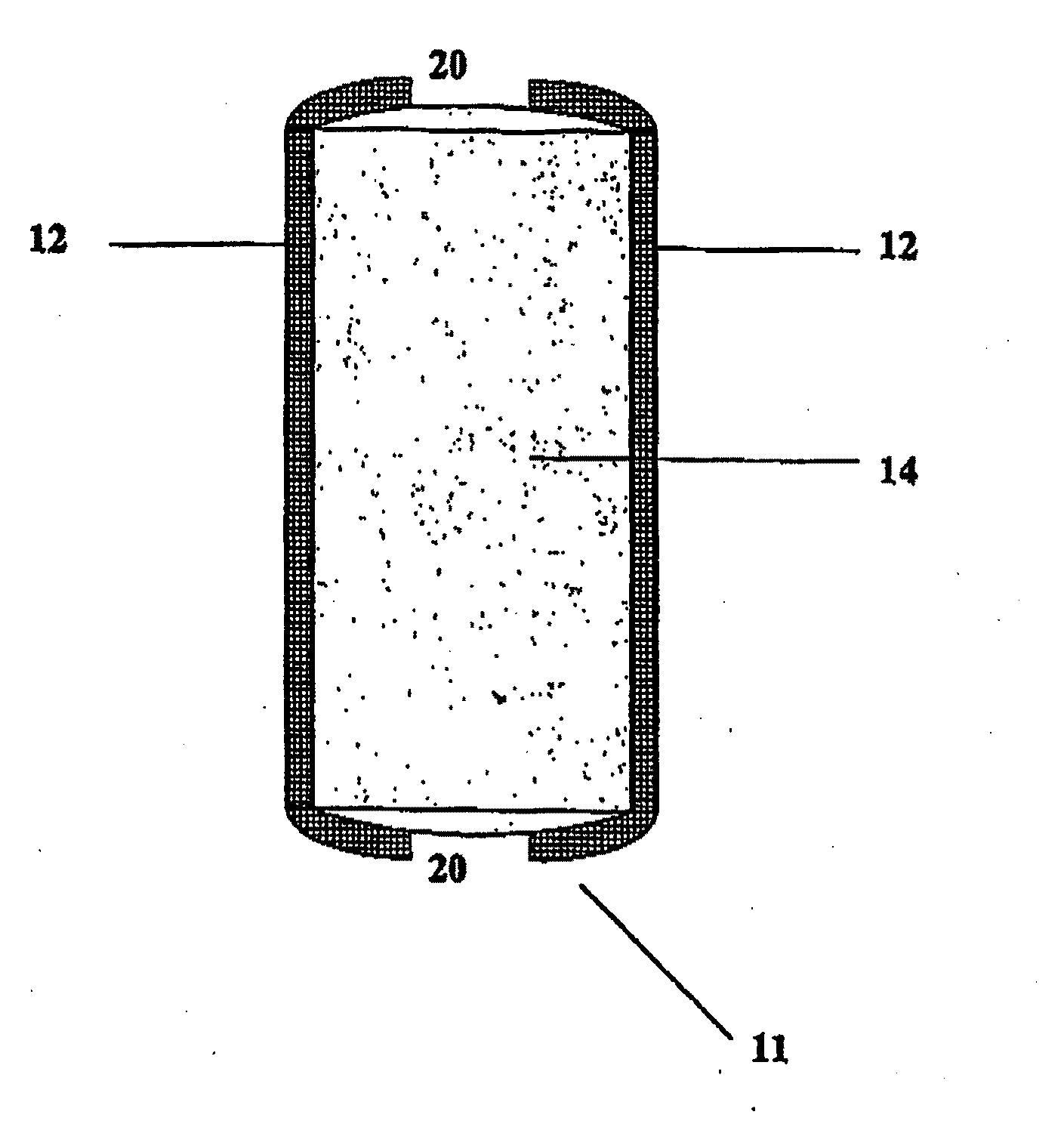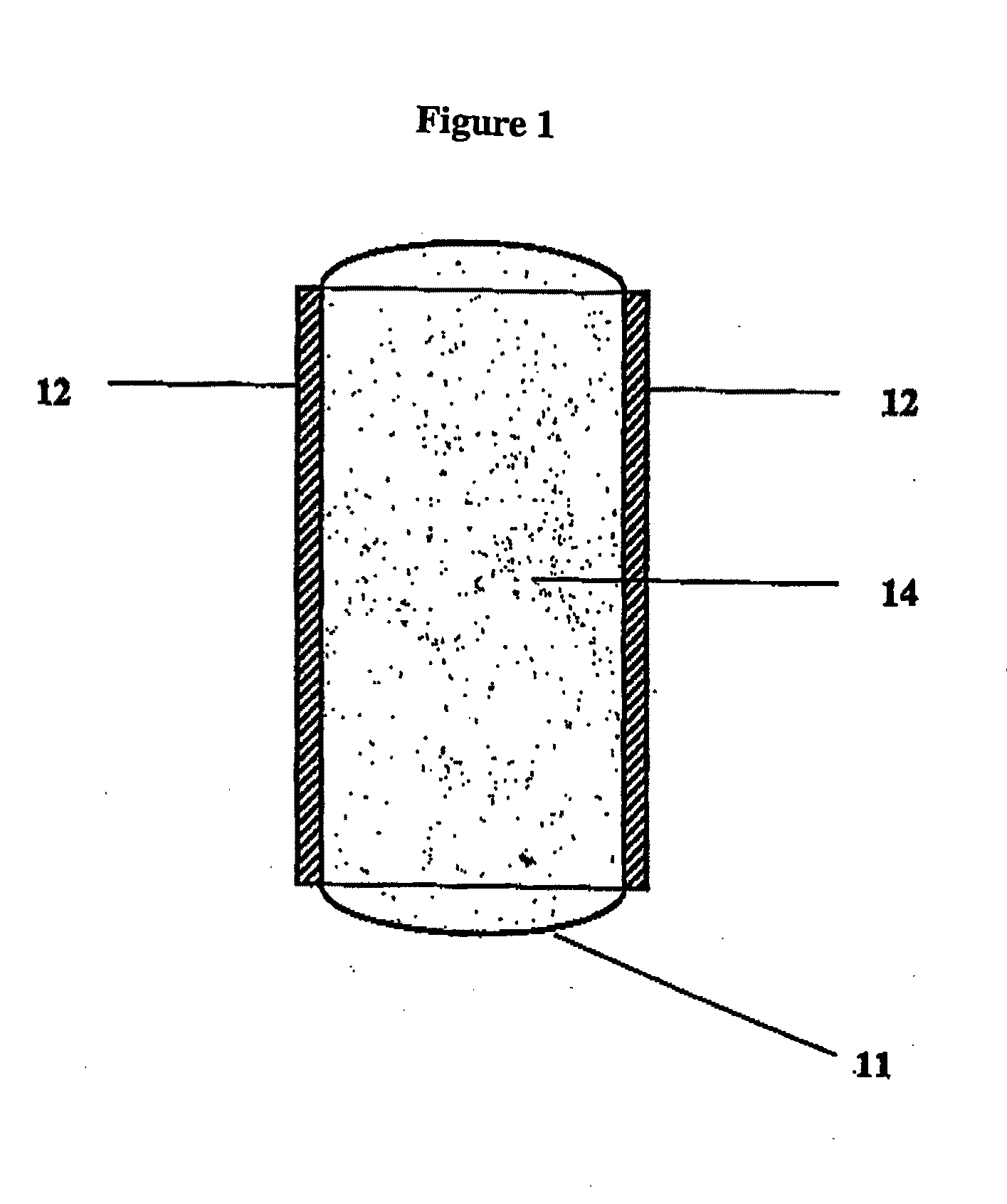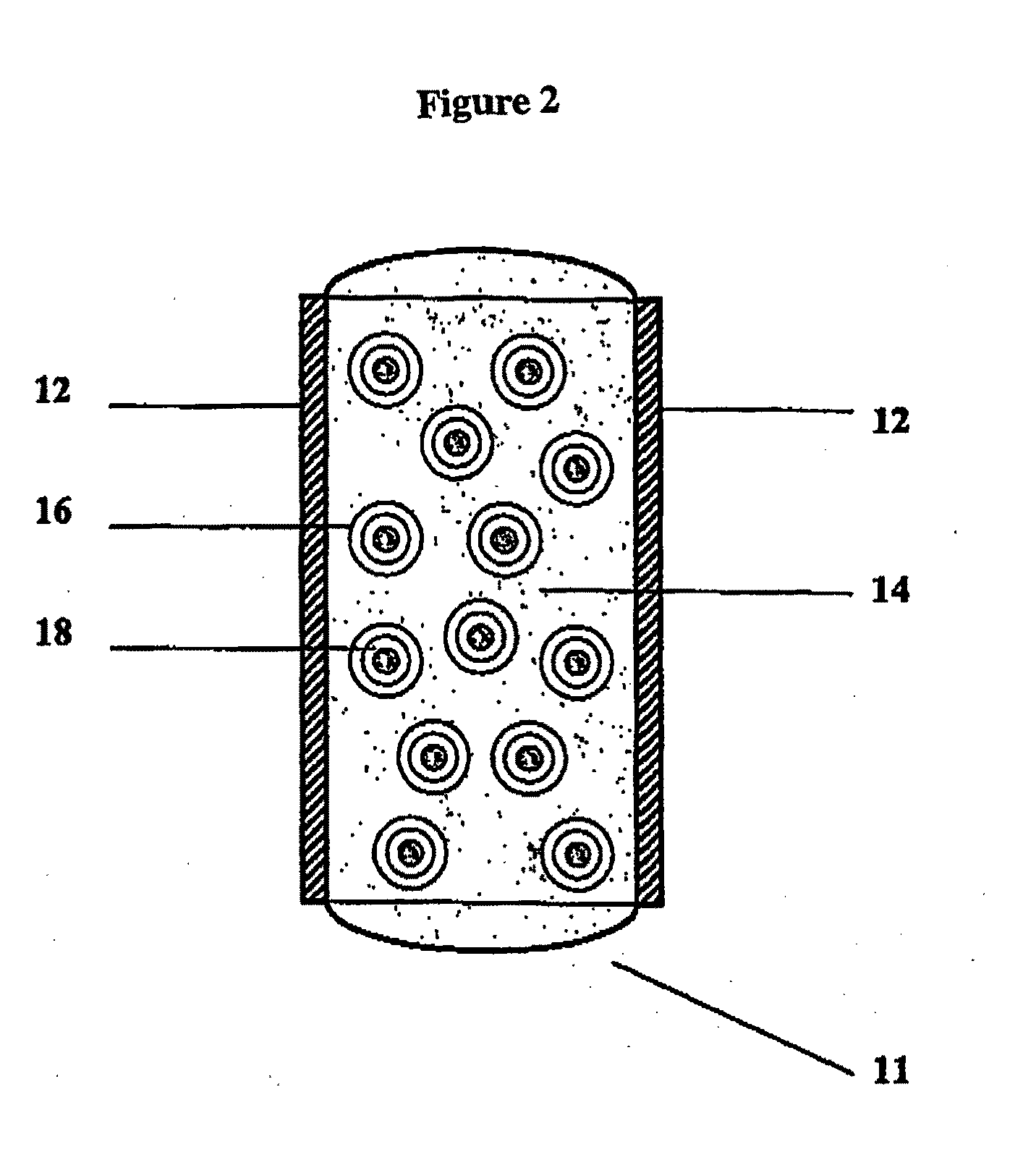Bioadhesive Polymers
- Summary
- Abstract
- Description
- Claims
- Application Information
AI Technical Summary
Benefits of technology
Problems solved by technology
Method used
Image
Examples
example 1
Comparison of Tensile Properties of Various Catechol Grafted Maleic Anhydride Copolymers with and without L-DOPA
[0210]Methods: The polymers were grafted with either L-DOPA or carbidopa using the route shown schematically in Reaction 1. First, the polymers were dissolved in DMSO, and L-DOPA or carbidopa was added to the solution. The reaction was conducted by gentle heating (70° C.) for 2 hours. During the reaction, the L-DOPA or carbidopa slowly went into solution. After the reaction, the reaction mixture gelled upon cooling to room temperature. The polymer was recovered by extracting the DMSO from the gel with several washes of methylene chloride. The synthesized polymers were dried and stored. Polymers were made with about 1 to 99% molar substitution of the maleic anhydride groups with DOPA or carbidopa.
[0211]Testing: The polymers described above were tested on a Texture Technologies texture analyzer machine. Polymers were applied onto an acorn nut or applied by solvent casting. A...
example 2
Comparison of Racemic Mixture Vs. Pure Isomeric Form of Catechol Grafted Polymer
[0217]Two different compounds DOPA containing compounds were synthesized, L-3,4-dihydroxyphenylalanine (L-DOPA) and a (50:50) racemic mixture of D,L-3,4-dihydroxyphenylalanine (DL-DOPA). L-DOPA and DL-DOPA were each grafted onto a Butadiene Maleic Anhydride backbone. Approximately 95% of the monomers were substituted with L-DOPA or DL-DOPA. The mucoadhesion of both the L-DOPA and DL-DOPA polymers was tested using a Stable Micro Systems Texture Analyzer and an experimental setup known to those skilled in the art. Six samples for each polymer were tested. The mean fracture strength of the DL-DOPA-BMA polymer was 0.0139 N, with a standard deviation of 0.0090 N. The mean fracture strength of the L-DOPA-BMA polymer was 0.0134 N, with a standard deviation of 0.0042 N. The mean total tensile work for the DL-DOPA-BMA polymer was 0.0045 nJ, with a standard deviation of 0.0023 nJ. The mean tensile work for the L-D...
example 3
Carbidopa-Levodopa Formulations
[0218]Levodopa with carbidopa (peripheral decarboxylase inhibitor) remains the cornerstone for treatment of Parkinson's disease. There is a good correlation between plasma levodopa concentrations and the clinical response. The gastrointestinal absorption behavior of orally administered levodopa depends on gastrointestinal transit rates as absorption occurs mainly in the proximal third of the small intestine (duodenum / jejunum). Therefore, the gastrointestinal transit rate is a determining factor for the access to an orally administered levodopa / carbidopa formulation. As gastric emptying is highly variable, a gastro-retentive system utilizing an effective and longer lasting bioadhesive polymer will allow the levodopa / carbidopa to remain available at the target absorption site over an extended duration and thereby maintain effective plasma levels for longer duration. Following examples demonstrate the usefulness of particular bioadhesive polymers in maint...
PUM
| Property | Measurement | Unit |
|---|---|---|
| Fraction | aaaaa | aaaaa |
| Fraction | aaaaa | aaaaa |
| Fraction | aaaaa | aaaaa |
Abstract
Description
Claims
Application Information
 Login to View More
Login to View More - R&D
- Intellectual Property
- Life Sciences
- Materials
- Tech Scout
- Unparalleled Data Quality
- Higher Quality Content
- 60% Fewer Hallucinations
Browse by: Latest US Patents, China's latest patents, Technical Efficacy Thesaurus, Application Domain, Technology Topic, Popular Technical Reports.
© 2025 PatSnap. All rights reserved.Legal|Privacy policy|Modern Slavery Act Transparency Statement|Sitemap|About US| Contact US: help@patsnap.com



